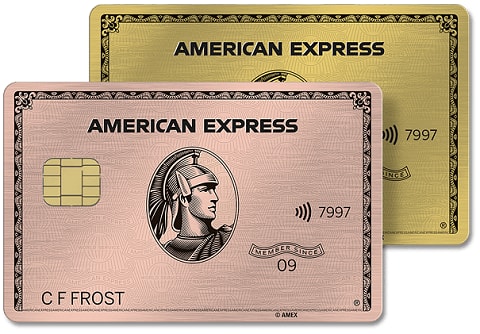
See Rates & Fees

The Citi Double Cash® Card boasts a market-leading unlimited cashback rate of 2%, plus an intro APR period of 18 months, which is comparable to some of the top balance transfer cards. With additional perks like no annual fee, convenient redemption options, and 24-hour fraud monitoring, this card could be a worthy addition to your wallet.

See Rates & Fees

The Wells Fargo Reflect® Card is designed for consumers seeking an extended introductory APR period, allowing users to manage larger purchases or balances without immediate interest charges. This card is ideal for those who may carry a balance.

See Rates & Fees

The Wells Fargo Active Cash® Card provides a straightforward cash rewards experience with unlimited 2% cash rewards on purchases. It’s great for people who prefer simplicity and consistent rewards.

The Blue Cash Everyday® Card from American Express is a cash back rewards card with no annual fee. It is a great credit card for individuals with low overall spending who want to benefit from high 3% cash back at U.S. supermarkets, gas, and online purchases (on up to $6,000 per year, then 1%).

The Blue Cash Preferred card from American Express is a great cash back rewards card for individuals and households who spend a lot at U.S. supermarkets and on commuting. Cash back is received as Reward Dollars that can be redeemed as a statement credit or at Amazon.com checkout.

See Rates & Fees

The Citi Strata Premier® Card offers excellent international travel perks and flexible ways to earn rewards at an affordable price. It’s easy to earn rewards with 3x points offered on common purchases like restaurants, gas stations, and grocery stores. Additionally, with no fees on foreign transactions, you don’t have to worry about racking up charges when you use your card while traveling abroad.

See Rates & Fees

The Wells Fargo Autograph Journey℠ credit card is a points-based travel card. You can earn one reward point for every dollar spent, with bonus points for purchases related to hotels, restaurants, airfares, and other travel expenses. It also offers coverage for various travel situations, including lost luggage and travel delays.


The Capital One Venture Rewards card is a low-fee travel rewards card that’s ideal for the occasional traveler. It offers travel benefits like lounge access, rental car collision coverage, and travel accident insurance, on top of an unlimited two miles per dollar on every purchase.

See Rates & Fees

The Wells Fargo Autograph® Card offers a robust rewards structure with 3 points per dollar spent in six popular categories, including restaurants, travel, and streaming services. With no annual fee and a welcome bonus of 20,000 points after spending $1,000 in the first three months, it is ideal for everyday spenders looking to maximize their rewards.


The Capital One Quicksilver Cash Rewards card provides 1.5% cash back on all purchases and has no yearly fee. The generous welcome bonus, introductory APR, and travel cashback also help this card stand out.

The Gold Card from American Express is best suited for anyone who dines out at restaurants frequently or spend a lot at U.S. supermarkets each year. The Gold Card's rewards more than pay for the $325 annual fee for many cardholders. Overall, the Gold Card is a great option if you dine out or travel frequently.


The Capital One Savor Cash Rewards card is a great card for anyone who wants cashback on dining and groceries without an annual fee. It is a versatile cashback card for anyone who spends a lot of money on dining, groceries, streaming services, or entertainment like movies and concerts.

The Platinum Card® from American Express is a luxury travel rewards card with a steep annual fee but offsets it with more than $1,500 in annual statement credits. Overall, this is an excellent card for frequent travelers who can make use of the statement credits.


If you're looking for a travel rewards card without the annual fee, the VentureOne Rewards card may be the right card for you. It offers 5X miles on hotels and rental cars booked through CapitalOne Travel and 1.25X miles on every purchase, every day. With miles at the same flat rate on every purchase and a generous welcome bonus, this Venture card can definitely be worth your while.
32,707 people
visited a credit card site this month
Must Reads
What are some types of credit cards?
- Balance transfer cards are those that encourage the consolidation of one or more balances from other cards. Balance transfer cards may offer low or even zero interest for a period of time as an incentive.
- Low interest rate cards may offer a very low or 0% interest for an introductory period and then a low interest rate thereafter. These cards are best for those cardholders who carry a balance on their card.
- Credit builder cards - cards for those with poor or bad credit are those that will accept applicants with lower credit scores. The definition of a low credit score will vary among card issuers. These cards can help the cardholder rebuild their credit score. The interest rate on these cards, as well as other terms, may be less favorable than for cards for borrowers with good credit scores.
- Rewards cards are credit cards that offer rewards for purchases in the form of cash back or travel rewards. As long as the other terms and conditions of the card are favorable to you, these cards can be advantageous.
Balance Transfer Pros & Cons
Pro: You could save money
Balance transfer credit cards could save you money on interest payments if you transfer debt from a source with a higher interest rate to a card offering a lower interest rate and you pay off the debt quickly.
Keep in mind, balance transfer credit cards offering introductory 0% APRs only do so for a limited time. If you can’t pay off the debt balance before the introductory period expires, understand what interest rate will get charged down the road.
Don’t forget to account for balance transfer fees when calculating whether you’ll save money. These fees get charged upfront and can be hefty.
Pro: Can consolidate your debt to a single card
A balance transfer credit card could allow you to move all of your debt to a single card, assuming your approved credit limit is high enough. This can make it easier for you to keep track of the monthly payments. Avoiding missed payments by doing this could help improve your credit score as long as your credit utilization on your new card doesn’t get too high.
Con: You may be digging yourself deeper into debt
Balance transfer credit cards can help tremendously if you pay off the debt quickly and don’t incur any new debt. Unfortunately, many people see the 0 balance on their old credit card as an opportunity to spend more money. If you transfer a balance and then run up the balance on your old credit card again, you just dig yourself deeper into debt.
Con: Lenders won’t let you transfer balances from their other products
Lenders don’t want to lose money on balance transfer credit card offers. For this reason, lenders typically won’t allow you to transfer a debt balance from their bank to a balance transfer credit card they issue. For instance, you can’t move a balance from your Chase Sapphire Preferred credit card to your Chase Slate credit card.
Con: Your new credit limit may not be high enough
When you apply for a credit card, you may not get approved for the credit limit you desire. You may apply for a balance transfer offer and only get approved for a $5,000 credit limit. If you planned to transfer $10,000 of other credit card debt, you end up maxing out the new credit card with the balance transfer and still have $5,000 of debt on the old card.
How to Pick the Right Balance Transfer Card
Picking the right card for your situation requires you to examine a few key factors.
First, you want to have a good shot of getting approved for the card. Look for cards that typically approve people with your current credit score.
Next, make sure the credit card you’re applying for will allow you to transfer the balance you want to move. Some banks don’t allow loan transfers, while others do.
Finally, compare offers to find the card that can save you the most money. Look for long introductory 0% APR periods, low or no balance transfer fee offers, and a low regular APR after the balance transfer promotion expires.